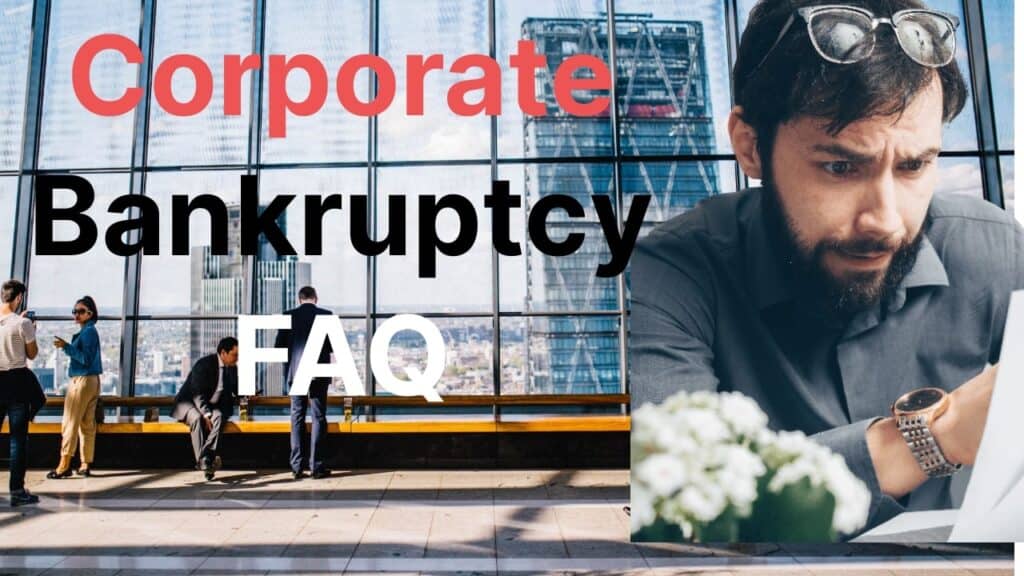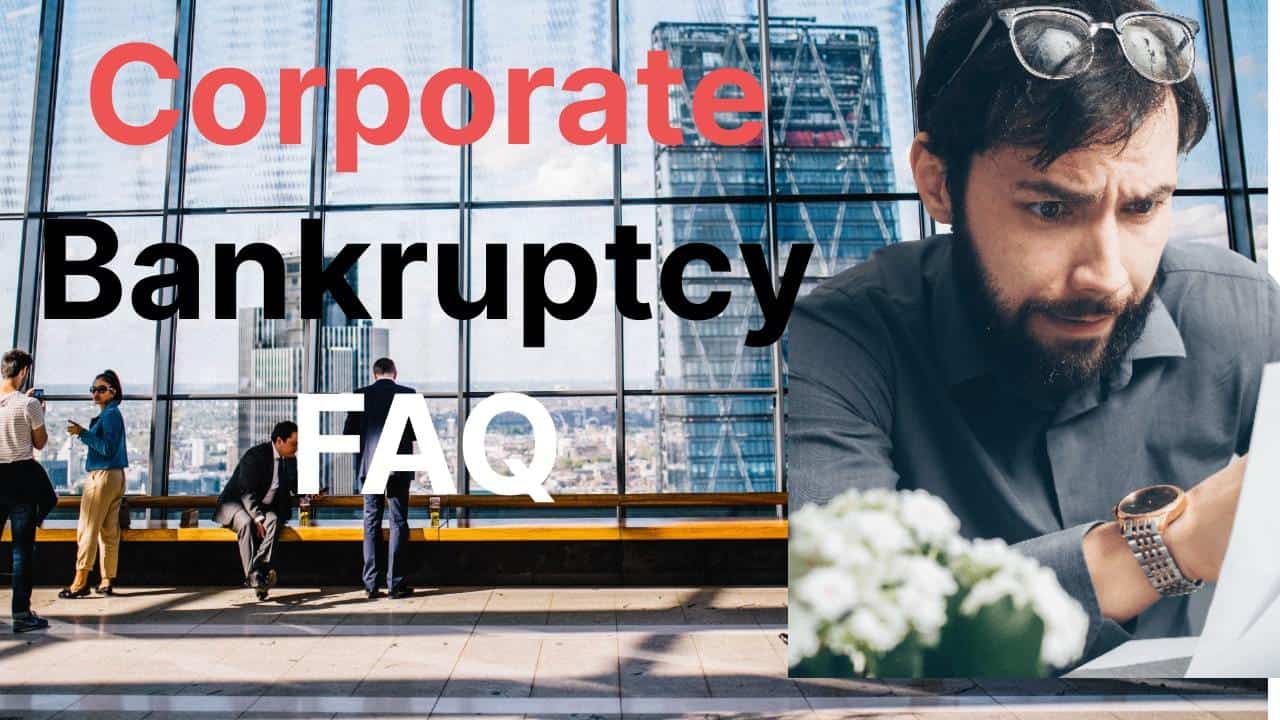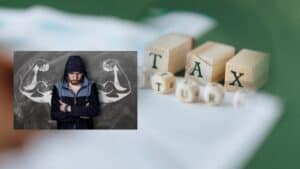Corporate bankruptcy: An overview
Corporate bankruptcy is a legal process by which businesses can reorganize their financial affairs or liquidate their assets. Although bankruptcy can be complicated and stressful, it can provide businesses with a fresh start.
When it does happen, the corporate bankruptcy process can be complicated. Insolvency can take a toll on your company’s employees, customers, and shareholders. A solid understanding of corporate bankruptcy can help you properly restructure and reorganize your company using an insolvency process without killing your business.
Last week, I gave my best FAQ answers to common questions about personal bankruptcy services. A business partnership or sole proprietorship means that the individual(s) operate the business in their personal name. Answers about business bankruptcies for those forms of business would fall under the personal bankruptcy process that was covered in last week’s personal bankruptcy FAQ blog.
When a corporation conducts business, some of the questions, and answers, are different. In this Brandon’s Blog, I answer the most frequently asked questions about corporate bankruptcy.
Can a business declare corporate bankruptcy?
As stated previously, only a corporation can declare corporate bankruptcy. A corporation is its own legal entity. A “person” is eligible for relief under federal bankruptcy law. A “person” is typically defined in the Canadian bankruptcy legislation to include an individual, part of a partnership, a proprietorship, a company, an unincorporated association, a cooperative society, or a cooperative organization.
What are the different types of corporate bankruptcy in Canada?
There are 2 different types of bankruptcy that a company can file for under the Bankruptcy and Insolvency Act Canada (BIA). They are:
- Liquidation: This is when the insolvent company is unable to pay its debts and its business is no longer viable. The only real option for it is to sell off its assets to repay its secured creditors and unsecured creditors as best as possible since it files for bankruptcy in the priority outlined in the BIA.
- Restructuring: This is when the company is insolvent and is incapable to repay its debts due to its financial difficulties, yet all or a sufficient portion of the company’s business is still viable. So, the company negotiates brand-new terms with creditors to lower its financial obligations and also might have the ability to sell some assets to settle its financial debts. Restructuring is the most well-known alternative to bankruptcy. Restructuring under insolvency legislation is also described in the media as bankruptcy protection.
What factors lead to corporate bankruptcy proceedings?
A company always shows signs of trouble before it needs to file for corporate bankruptcy. Some of the early danger signals are:
- continued history of losses;
- dwindling cash position;
- the departure of key management or employees;
- difficulty meeting loan or lease obligations;
- the breaking of loan covenants; and
- difficulty meeting payroll.
Corporate bankruptcy: What does it mean for a company when it liquidates?
As stated above, when a company liquidates it means that the company is unable to pay its debts and its business is no longer viable. The only real option for it is to sell off its assets to repay secured creditors and unsecured creditors as best as possible through bankruptcy and then shut down.
What happens to debt in corporate bankruptcy?
If the purpose of the corporate bankruptcy is to shut down and have liquidation of business assets, then we first need to see what the net proceeds of sale from those assets are. The BIA describes the order in which funds must be distributed by a licensed insolvency trustee (formerly called a bankruptcy trustee) in bankruptcy. The order in which the debts must be repaid, in whole or in part, is called the priority.
The priority of the rights of creditors to be repaid in a corporate bankruptcy is:
- Trust and deemed trust claimants – These are parties whose property is being held or is deemed to be held in trust for them by the bankrupt corporation. The most common type of deemed trust claim in a corporate bankruptcy is Canada Revenue Agency for unremitted employee source deductions.
- Secured creditors – Creditors who hold valid security over the assets of the company get paid next. There could be more than just one secured creditor. Within the secured creditor group, the order of priority is based on the ranking of the security registration dates.
- Preferred creditors – These are unsecured creditors who have been given certain priority in a corporate bankruptcy under federal bankruptcy laws. The most common examples in a corporate bankruptcy would be Trustee fees, the Trustee’s lawyer’s fee, the levy payable to the Office of the Superintendent of Bankruptcy Canada on any distribution made by the Trustee to a creditor and certain salary, wages or commissions due to employees.
- Ordinary unsecured creditors – This group comes after the preferred creditors. They are all creditors who have supplied goods or services and do not hold any security and do not fit into the definition of a preferred creditor.
The balance of any unpaid debt ends up getting written off on the books of the creditors because there are no assets left in the company to claim against.
How does a company get into corporate bankruptcy and what happens to the company?
The way a company gets into bankruptcy is the exact same way an individual can. For a liquidation, either the company can file a voluntary assignment into bankruptcy. If it is one or more creditors owed at least $1,000 trying to push the company into bankruptcy, then they would file a Bankruptcy Application with the court requesting the court to make a Bankruptcy Order.
Why might a company choose to file for corporate bankruptcy protection and restructure under a BIA proposal?
Corporate bankruptcy protection and restructuring under a BIA proposal can provide a company with financial difficulties a much-needed relief and a chance to return to profitability. When a company files for protection, the BIA proposal offers an orderly and reliable process for restructuring, which can be appealing to businesses that have a good chance of a turnaround.
A corporation that has a viable business and can return to profitability after restructuring, with support from creditors, has all the right ingredients for a successful restructuring. This is why a company might choose to file for corporate bankruptcy protection and restructure under a BIA proposal. The company will survive and jobs will be saved.
Who is responsible for developing the reorganization plan for the company?
Reorganization is the restructuring of a business to gain efficiency, improve workflow, and drive profits. Reorganization plans vary in length and detail and take a certain period of time to properly develop. They generally describe desired outcomes and final goals. Sometimes a company will undergo a complete reorganization, while other plans focus on aspects that require reorganization, such as a business unit or department.
The reorganization plan of a company is essential to ensure its smooth transition. The reorganization plan involves restructuring various departments of the business, reducing operational costs, and streamlining the workflow. Writing a reorganization plan requires a lot of time, effort, and money.
When a business downsizes, it reduces its workforce to a smaller number. Such a reduction can be a painful process that even threatens to collapse the business. The company needs to have a plan in place to accomplish this reorganization while still running the business. When downsizing occurs, businesses require reorganization plans. Involving and informing employees of the process makes them more likely to follow new plans and less resistant to change.
All of the various individual department organization plans and product sales plans need to be combined into an overall business plan. This overall business plan must also include financial information to show how the company, emerging from restructuring, will operate profitably.
Now that the overall plan is set, senior management must work with its outside financial and legal restructuring professionals to establish the restructuring commercial proposal or plan of arrangement to be presented to the creditors to be voted upon. An excellent communication program must be put into place so that creditors can understand the benefits to them of supporting and voting in favour of the restructuring proposal. Normally negotiations with certain creditors or creditor groups must take place in order to come up with a final and successful restructuring plan that will gain both creditor support and pass through the legal proceedings of court approval.
What becomes of a corporation after corporate bankruptcy?
Going through corporate bankruptcy means your company’s assets have been sold to pay off some portion of its debts. Bankruptcy also by operation of law terminates all of the employees. So the corporation is left with no assets and no employees. All it has is debt and a deficit equal to the total debt less the amount that is shown on the balance sheet for the company’s preferred and common stock.
Therefore, the corporation, as a legal entity, is then left to just float away into the stratosphere. There are only 2 ways that a company can survive a corporate bankruptcy:
- from the sale of the corporate assets, pay off 100% of all of its business debt plus interest; or
- file a BIA proposal, obtain creditor support and court approval and successfully complete it.
The first way will almost never happen. The second way can happen if there is a good reason to try to make sure that the corporation as a legal entity survives. A reason for doing this might be that there is value to the shares. After becoming bankrupt, a successfully completed proposal annuls the bankruptcy. By definition, the proposal will discharge all of the company’s outstanding debt. The company is now debt-free.
The common stock may have value because it is a public company and the shares can be relisted on the stock exchange. Now the corporate shell is attractive to a private company that wishes to go public and can do so by amalgamating with this public shell. Alternatively in a private company, or in a public company, there may be significant tax loss carryforwards available for use if this corporate shell is merged with the right kind of profitable company. the only way to use the tax losses is first by owning all the shares.
This is all possible, but, the normal outcome for a company that has gone through a corporate bankruptcy is just to fade away, never to be heard from again.
When a company declares corporate bankruptcy, what will happen to your stock or bond?
When you invest money in a company by investing your capital, your money is legally represented by the stock or bonds that you purchased. When you see a company declaring bankruptcy, it means the company can no longer afford to pay its debts.
If a company just liquidates its assets during corporate bankruptcy, the existing shares will likely be worth very little or nothing at all. For a private company, a successful corporate restructuring might increase the value of the shares as the company will emerge from its restructuring with much less debt than before.
The value of a company’s shares is most likely to lower if it effectively restructures its financial affairs. It might have to issue brand-new stock to creditors that will not be paid back in full, watering down the value of the business’s shares.
As far as corporate bonds are they secured or unsecured against the company’s assets? If secured, they could be repaid in whole or in part depending on where they stand in the secured assets pecking order. If unsecured, then it just becomes part of the larger unsecured creditor pool. In a corporate bankruptcy that is a liquidation, those bondholders will receive their share of any distribution made by the Trustee to the ordinary unsecured creditors if there is such a distribution made.
Corporate bankruptcy and insolvency at a glance
In conclusion, bankruptcy and insolvency of course go together, although many people prefer to think of bankruptcy as an economic failure while insolvency is more accurately a sign of a business’s financial failings.
In the same way I hoped last week’s personal bankruptcy blog helped your understanding, I hope this Brandon’s Blog on corporate bankruptcy was helpful to you in understanding more about the corporate bankruptcy system in Canada.
If you or your company has too heavy a debt load, we understand how you feel. You’re stressed out and anxious because you can’t fix your or your company’s financial situation on your own. But don’t worry. As a government-licensed insolvency professional firm, we can help you get your personal or corporate finances back on track.
If you’re struggling with money problems, call the Ira Smith Team today. We’ll work with you to develop a personalized plan to get you back on track and stress-free, all while avoiding the bankruptcy process if at all possible.
Call us today and get back on the path to a healthy stress-free life.



